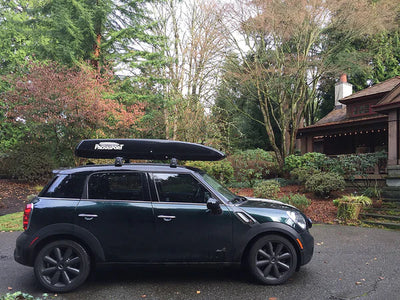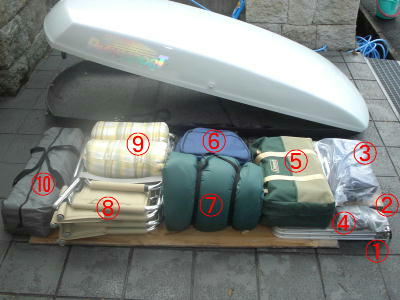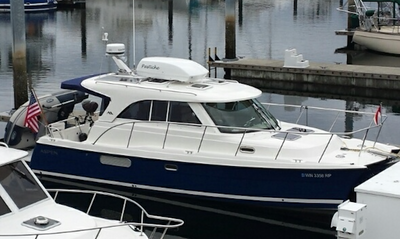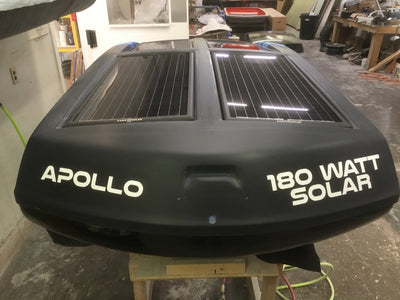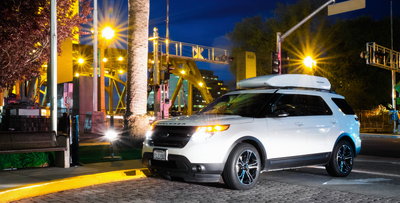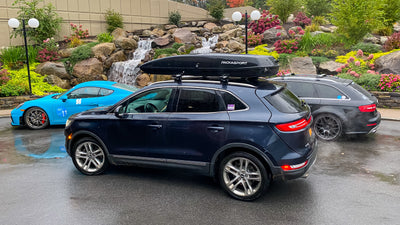Packasport teams up with Campervan HQ
Here is the blog post written by Campervan-HQ posted on their site:
https://www.campervan-hq.com/blogs/news/campervan-hq-gear-update-packasport-rooftop-cargo-carriers
Campervan HQ Gear Update: Packasport Rooftop Cargo Carriers
A life of outdoor adventure always means lots of bulky gear. Climbing gear, backpacks, tents, boots and skis are just some of the things you may be hauling from home to trailhead. Even with a full-size van like a Sprinter, Transit or ProMaster, space fills up fast inside the van. A great solution is a rooftop cargo carrier. But wait a minute, you say, I already have a roof rack on my van, why would I need a roof cargo box?
A van roof rack, like the Aluminess and Backwoods Adventure Mods racks we sell, is great equipment for your travels, and you can mount a lot of gear on it. However, for those items you are carrying:
- Is there some gear that you’ll need only on rare occasions but can’t do without, like snatch blocks, pads and traction plates for emergency recovery?
- Are there items that you want kept out of the elements, but not inside the van? For myself, my skis need to stay clean so the bindings work as needed, so I want them to stay clean and dry until I need them, and then keep them out of the van when they’re wet and dirty.
- Do you hunt or fish on your trips, and need a place to stow your fishing rods or shooting irons, without exposing them to weather?
All of these needs can be met by mounting a rooftop cargo carrier (many call them “rocket boxes”) to your roof rack.

What Kind of Rooftop Cargo Carrier to Get?
Gear Junkie wrote an interesting article comparing different kinds of rooftop cargo carriers, including roof baskets, roof cargo boxes, and platform racks (what we’d typically just call a “roof rack” in the van world). The article lays out a number of reasons why roof cargo boxes are very useful to the overlanding and van life crowds, among others.
When you’re choosing a roof cargo box, you’ll want to consider:
- What is being transported (luggage, camping gear, skis/snowboards, etc.) and how heavy your loads might be inside the box
- How often you’ll use your cargo box (weekends, vacations/holidays, road trips) and thus how durable the box will need to be. If you’re using it often, you’ll want it to stand up to your frequency of use.
- Other requirements (wind noise, vibrations, ease of access, fuel economy, garage parking).
In general, there are two types of roof boxes available on the market, plastic and fiberglass:
- Plastic rooftop cargo carriers are common and inexpensive, but have a number of drawbacks. You’ve probably already seen the cheap Thule and Yakima rocket boxes, and noticed how flimsy many of these models are. The reason they cost so little is because they’re made of injection-molded plastic, and they use some not-so-durable hardware riveted onto the thin plastic for securing the box to the rack, keeping the box closed and secure, and for opening and closing the box. Yakima expressly says that their boxes can’t be taken off smooth paved or hardpack roads. Why is that? Read camper van and overland forums and you’ll find many sad tales of these boxes coming loose after a few miles on dirt washboard, or the thin shells cracking from the shocks and vibrations even on paved roads, or sometimes the mount points completely breaking off the box.
- Fiberglass is significantly more durable than plastic. Fiberglass roof cargo boxes are built for long-term trouble-free operation, higher-rated for crash safety and can handle heavy loads. The better quality box you buy, the longer it will last.
Enter the Packasport Roof Cargo Box. The company originated in Bend, Oregon, a western US Mecca for outdoor sports. In the parking lot at the Mount Bachelor ski area, so the story goes, an early Packasport manager looked around and saw how many skiers there were using cargo boxes, and realized many of them might want a better option, just as he did. With the partnership of a local fiberglass company that had already been working on boxes for some decades, Packasport began to build a better box. And that better option definitely caught on: in a 2012 story in the Bend Bulletin newspaper, a local rack dealer noted that in Bend, Packasport boxes adorning vehicle roofs are so ubiquitous that people can "walk on 'em."
Today there are nine different models of Packasport boxes, from the smallest box, the 8 cubic foot Freestyler, to the largest 25 cubic foot Apollo 180 and Trailblazer. These boxes are solidly-made fiberglass cargo boxes with a thin aluminum core, with solid hardware and gas struts to keep them open while you load and unload. The standard exterior finish is a gloss black gelcoat, and the bottom of each box is lined inside with marine-grade carpeting. These sturdy boxes are still built in Eugene, Oregon, a proudly US-made product. Packasport is known for the strength of these boxes, the high-quality stainless-steel hardware, the solidity of the box itself, and now an even more interesting innovation: solar power. Two of the boxes, the Apollo 90 and the Apollo 180, include 90 watts and 180 watts, respectively, of embedded RV solar panels from Bend-based Zamp Solar in the surface of the box. This clever addition makes it easy to consider adding a roof cargo box to the top of your van roof rack, since you won’t be losing space for solar power, it’s built into the box already!

What Will You Carry In Your Packasport?
You probably have a pretty good idea of what you might need to carry, based on the sports you indulge in and what you like to do on road trips. Planning exactly what you will stow in a cargo box will help you determine the amount of storage you’ll need. Think of the following if you're selecting the Packasport model that suits your needs the best:
Cargo Box Dimensions - The length, width and height combine to equal the overall gear capacity of the roof cargo box. If you know the dimensions of what you intend to store in your Packasport in inches, you can change those dimensions into cubic feet to come up with the right storage capacity for your needs. Make sure your longest and widest items, like skis, fly rods, traction plates, large tent bags, etc. will have the right dimensions to fit comfortably.

The following comparison chart lays out the specs for the different Packasport roof cargo box models:
| Model |
Storage Capacity (cubic feet) |
Dimensions (L x W x H, inches) |
Weight (lbs.) |
Cost (USD) |
| Freestyler (System 60) | 12 | 89" x 24" x 12” | 78 | $1399 |
| Freestyler Low Profile (System 60LP) | 8 | 89" x 24" x 9" | 70 | $1399 |
| Day Tripper (System 71SS) | 13.5 | 76" x 29" x 13" | 85 | $1499 |
| Journeyer (System 90) | 18.5 | 89" x 36" x 12" | 90 | $1599 |
| Voyager (System 90XP) | 16 | 68" x 35" x 16" | 75 | $1599 |
| Trailblazer (System 115) | 25 | 91" x 44" x 14" | 110 | $1699 |
| Pro Angler | 18.5 | 101" x 29" x 13" | 95 | $1999 |
| Apollo 90 | 18 | 89" x 24" x 12" | 90 | $2699 |
| Apollo 180 | 25 | 91" x 44" x 14" | 140 | $3699 |
Make Sure the Cargo Box Fits Your Van - Before deciding on a specific roof cargo box model, it’s important to think about how the box will be located on top of your van. For example:
- Can you pick a box size and locate the box so it doesn’t block any roof vents or skylights?
- What flexibility do you have with the crossbars on your roof rack, can you move them and/or do you need to add extra crossbars?
- How will you load and unload the roof box, do you have a side ladder or rear door ladder that will work? You might prefer having a side ladder midway along the box, or you might be okay with a rear door ladder that leads up to it.
- If you have RV solar panels, can you situate the box so it doesn’t shade your panels? If that's a worry, both the Apollo models that incorporate solar panels might be a useful option.

Locating the Cargo Box - If you have a large camper van, perhaps built on a Sprinter 170”WB, Transit 148” extra-long or ProMaster 159” extended, then even the largest box will probably fit your vehicle’s roof with no issues. For a smaller rig like a Sprinter 144”WB, Transit 130”WB or ProMaster 136”WB, you might need to consider roof placement more carefully. On a shorter-wheelbase van, the further back that you can place the roof cargo box, the less it will tend to act as an air dam. A spoiler on the front of your roof rack will help deflect air up and over the box and reduce any whistling noises.

Color & Finish - Black is the most popular choice, but Packasport offers the ability to choose any color and three finish options. These fiberglass carriers can be finished in a glossy gel coat as well as matte Raptor Tough, a scratch-resistant, maintenance-free coating.
We’ve laid out a number of reasons why the Packasport rooftop cargo carriers are great choices for your camper van travels. Here’s some other very important points to keep in mind when you’ve got a roof cargo box mounted up top on your van:
- Know the height of your van with the cargo box: People damage roof boxes, bikes and other equipment stowed on top of their vans by driving into garages, restaurant drive-throughs and other low-clearance structures more often than you might think. It’s easy to forget that you have a cargo box and other gear out of sight on your roof. Measure the height of your camper van with the cargo box and whatever else you have up there. Avoid collisions with low-clearance structures like bridges or underpasses - if you know your exact height with the box mounted, then when you see a sign indicating the height of a structure, you’ll know whether you can fit underneath.
- Make sure the box is secure before your drive away: It’s always a good idea to check the box’s connection points to your roof rack to make sure nothing has loosened up with time.
- Store your cargo box in a cool, dry place: Never store your carrier in direct sunlight or where temperatures can get extremely hot or cold. Also, don’t store the box on its side or end—doing so can damage the box.

